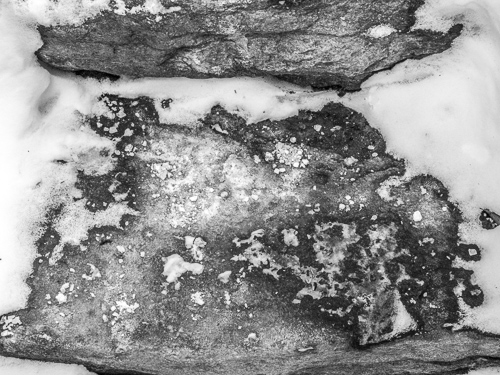
Mindfulness-Based Interventions (MBIs) have become a wide-spread treatment because of their secular nature. MBSR (mindfulness-based stress reduction) has been extremely successful in introducing large numbers of people to the value of mindfulness practice in coping with common sources of suffering, such as chronic pain. In removing these practices from their original context, Buddhadharma, much was left behind. The role of sīla or ethics, for example, in the cultivation of well-being, is being debated vigorously; Lynette Monteiro and Frank Musten, who will teach at BCBS in May of this year, will examine sīla as the intentional leaning of mindfulness-based protocols. As mental health professionals, they are vitally interested in the conversation about these issues.
Insight Journal asked them to talk about how they teach in this context.
IJ: Joseph Goldstein in his new book on the Satipaṭṭhāna Sutta talks about the ethical factor in mindfulness, how it is left out of most contemporary teachings. It was deliberately left out of MBSR, for example (along with other “religious” aspects), in an effort to reach larger numbers of people. Why have you chosen this particular way of bringing ethics back into the teachings?
The ethical factor, sīla, is the heart of mindfulness practice, regardless. Without it, the process of cultivating attention becomes a mindless directing of sense organs to stimuli. It’s comparable to an amoeba orienting itself to the presence of food; attention may be encouraged by basic needs but doesn’t go beyond that. When we began to develop our program, we were aware that mindfulness practice is not what is commonly meant by “paying attention;” it is the development of a quality of mind by which we discern ill-being from well-being. We were also (and still are) strongly influenced by Thich Nhat Hanh’s teachings of the Five Mindfulness Trainings. As a moral code for wellness, these teachings were easy to communicate without triggering our very individualistic resistance to being told what NOT to do. Because Thay (Nhat Hanh) also taught that the Five Mindfulness Trainings can be a secular offering just as the North Star transcends religious ownership, we found it was a spacious teaching for finding our way through all the unwholesome choices we make when on autopilot. This was our Buddhist-informed rationale.
From a psychological perspective, we drew from the behavior change literature; it has shown how hard it is to change attitudes and that attitudes shift when behavior shifts. The pedagogy of Mindfulness-Based Interventions is such that we are not in a “preaching” or even “teaching” role. It’s exploratory, fostering curiosity about our experience as we navigate around the joys and woes of our life. It wouldn’t have been consistent to “teach” or “preach” wholesome actions; that had to be an organic process that emerged from individual practice. So, we took the approach of “setting an intention to lean into our life as it is” and observe what shifted. The Five Skillful Habits (our psychological translation of the Five Mindfulness Trainings) became the way we set those intentions for respect for our mortality, generosity, respect for limits, compassionate speech, and mindful consumption.
There are many schools of thought about whether ethics should be made explicit in Mindfulness-Based Interventions. It’s a tough question and is contingent on the intention of the use of mindfulness practices. Spiritually, the intention is liberation; clinically, the intention is a shift from illness to wellness. Certainly Jon Kabat-Zinn made some decisions about what to add and what to leave out in order that the treatment would be acceptable to the health care field 35 years ago. His rationale that ethics would be an emergent property of mindfulness practice was not wrong-headed either. However, it rests on the power of vicarious learning and the presence of strong models of compassion and wisdom. And that is not always the case when we move further away those who have become our elders in Clinical and Secular Mindfulness. Also, vicarious learning is not the most reliable way to get a point across, especially something as nuanced as ethics or a moral code; without clear direction, people tend to derive their own self-congruent rules which may not be consistent with what is being modeled as sīla.
In the early courses we taught, it was clear that the concept and practice of mindfulness could, in an unsteady mind, become a rationale for more avoidance, more aggression, more abusive behaviors. Just as meditation has a “dark side,” we saw that “mindfulness” when it did not include a call to be discerning could lead to a dark side as well. We believed that the risks of doing harm by not introducing the concept of discerning wholesome from unwholesome actions was too high and we had a responsibility as health-care professionals and spiritual practitioners to at least open the door to that way of being.

IJ: How do you describe “noble person” in your teachings? How does that contrast with common perceptions, or the way that ordinary people in the time of the Buddha might have understood it? How did the Buddha contrast the ordinary understanding of “noble” among his contemporaries, with his own understanding?
Lynette: The Zen part of me wants to reach for the indeterminancy of the idea of “noble;” certainly I wonder how that would be resonant with Linji’s “person of no rank.” So, I’m noticing my resistance and the edge of not wanting to place labels on something that is a process and, more important, a process available to all beings. It’s easier for me to talk about the “enobling process” of practice which is how Bhikkhu Bodhi and Stephen Batchelor describe it—a gradation from being blind and deluded to attaining deep insight into the Dharma. The Buddha also differentiated between practice at an ordinary level and at a Noble level; the former is more instrumental and the latter dives deeply into the impermanence, nonself, and truth of suffering.
I love this term from the literature on dementia: anosognosia; it means not knowing we have the illness that is causing our suffering. In our yet-to-be-ennobled state, we are not aware that we are blinded and deluded by the dust of greed, anger, and confusion. We’re in pain and the suffering from our delusion about that pain drives us to seek relief. We may even seek relief through a mindfulness course! Yet even at the moment of coming to a mindfulness course, we cling to our delusion that our life must resume its previous trajectory, that somehow we have control over all this. We’re in a reactive mode. As we begin to practice in the course, the dust slowly drifts off and we can say we are practicing at the ordinary level. But we remain concerned with self-issues—seeking new ways of being and re-creating ourselves so that we limit the damage to ourselves when mindlessly careening around our life. In the Buddha’s time, I would imagine householders being concerned with an instrumental approach to karma, engaging in it as a means of securing a good rebirth.
As the course progresses, we begin to see a shift, an insight into the reality of experience. “This suffering doesn’t last, this Me is constructed from context and semantics, and I share this capacity of pain with everyone in the room.” When this happens, we can say practice has moved in the direction of having a transcendental quality, an ennobling quality.
Frank: For the Buddha the idea of Noble was embedded in practice and specifically the practice of the Noble Eightfold Path as the path to awakening. He saw this as a commitment that would be hard for householders to make. Thus the Buddha viewed the noble person as a renunciate who had taken the first step on the path as a Stream Enterer. That understanding of Noble differed from the understanding of his contemporaries who also likely understood that the path they and their adherents followed was also noble. But the Buddha taught that awakening emerged from diligent practice of the Middle Way. It was only by following the Middle Way that the causes and conditions were such that awakening could emerge. Awakening did not emerge as a result of the active efforts of a fixed self to apprehend the nature of reality. Rather it was the natural outcome of diligent practice. That was a radical shift from the understanding of his contemporaries who taught that awakening came only after they practiced—sometimes extreme—asceticism to free the self from the bounds of the body. It was only through this unbounded self that it was possible to achieve awakening.
Also because the Buddha taught that anyone can be a Stream Enterer and thus be a Noble person he challenged the prevalent belief that Nobility was inherent in birth and a consequence of karma. It was not that he was challenging the reality of karma as determining one’s position and condition in life. Instead he created a radically different definition of nobility which arises out of intent and is perhaps best articulated in the Five Remembrances. But in the Buddha’s time just as in ours it is not clear that every person who stepped onto the path did so for noble reasons. Many, as some historians would argue, did so to avoid a difficult life, to have an accepted place in the social fabric, or for myriad reasons that had nothing to do with awakening.
Rather than being Stream Enterers, they were perhaps more likely to be Stream Observers. This is the term the philosopher Christopher Gowans uses to describe his students who were not culturally Buddhist but who had, for a variety of individual reasons, elected to explore Buddhist practice. And Stream Observers is probably also the best term to use to describe the people who chose to participate in one of our eight-week Mindfulness Programs.
The shift from Stream Observer to Stream Enterer in our classes comes as participants accept the reality of their suffering (Wisdom). Then they can begin to create the bridge (ethical conduct) that allows transcendence to emerge as a fruit of diligent practice (Mindfulness). These are not sequential steps on the path but rather a process of organic growth. For many the course will be a passing interlude and there will no real change. And they will remain Stream Observers. But there are always some who take that first intentional step to become Stream Enterers. They would not likely use the term Noble to describe themselves. They would probably use more modern terms like “authentic” or “aware” or even “courageous.” But no matter what the term their practice says they have stepped onto the path.

IJ: Why is Ānāpānasati particularly appropriate as a text for your approach to the teachings?
The Ānāpānasati Sutra is a wonderful dharma door for people who have never meditated in their lives. Of course, it’s still a wonderful, challenging practice for those who have been practicing for a long time. Because the breath is always new and different, it makes our practice always new and different! We particularly like diving into it because it has a framework. When teaching mindfulness, we need to hold the “strangeness” of the practice demands lightly and sensitively. Despite the fact that mindfulness has a strong profile in our current everyday culture, people still worry about it being an esoteric, exotic approach to their suffering. Because the breath is common to all of us and is so immediately available to sense consciousness, it allows for an untainted exploration, a practice that is not categorized as belonging to a religion or creed.
Now, we also fold the Awareness of Breath into the Four Foundations of Mindfulness so that there is an infrastructure to the practice. The idea and experience of the breath conditioning our body, emotions, sensations, and thinking (our acronym is BEST) becomes a heart-opening realization. Practitioners begin to see the wisdom in and of the Body/Mind and take their experiences less personally (it’s not happening to this constructed “Me,” it is happening).
We also draw from two other sutras for the core of the course: the Theranamo (from the Saṃyukta Āgama) and Bhaddekaratta Sutras. The Elder Sutra (the former) and the Sutra on a Better Way to Live Alone (the latter) are pivotal ways we invite an exploration of meeting our difficult and unwanted experiences as well as our tendency to create stories of how our life should have been or should be. (Lynette: The Theranamo Sutra was a life-changing scripture for me. I don’t think I really understood what it meant to have intense emotions and to take experiential responsibility for them. Like most people, I believed that if I could just get everyone else to behave, I’d be liberated from the impact of their behaviors.) Finally, we dive into the Mettā Sutra and the Four Divine Abodes. This is our favorite class and the impact of the meditation is both heart-rending and heart-warming! This is where the practitioners begin to see how they have tried so hard to serve the world through compassion, circle by circle moving outwards. They sense into the cause of their struggle to feel joy and be equanimous; they realize they’ve drained themselves by not starting with a blessing for themselves.
IJ: In the Eightfold Path, the sīla components (sammā saṅkappa, sammā vācā, sammā kamanta, sammā ājīva) all come before mindfulness and concentration. Could you comment on how that relates to your teaching? Is the order important?
Teaching in this context is a challenging dance between top-down and bottom-up information processing styles. As Western-trained research and clinical psychologists, we were attuned to and resonated with the Western mental model of accommodating and assimilating information is predominantly top-down; tell us what it is, show us how it works, let us practice it. The philosophy of Secular/Clinical Mindfulness is bottom-up; practice this, observe how it works, let understanding emerge from that experience. While the temptation was to start with understanding how suffering happens, the model of Mindfulness-Based Interventions is to start with turning towards the experiential process of knowing. And that means diving into the practice of mindfulness.
Still, if we look at the elements of Right Mindfulness as described by Bhikkhu Bodhi in his book The Noble Eightfold Path (bare attention, awareness of the interpretative process of experience, serving as a grounding practice, and cultivating serenity and insight), we see that these are the teaching points of a Mindfulness-Based course. At least in form, MBIs are starting out in the right place even if according to critics of secular or clinical mindfulness they don’t go far enough into the discerning skills (where sīla becomes the teaching point). Ultimately, we don’t see the Eight-Fold path as a sequential set of pleats in the fabric of our life any more than mountains and rivers are sequential formations of a landscape. So the idea of starting where the participants arrive—with a wish to learn Mindfulness (sati)—is itself a step towards Right Mindfulness (sammāsati).

IJ: What is the “inquiry process” in MBI? How does ethics relate to it?
The “inquiry” is a dialogue between a participant (or the group) and the facilitator/teacher; it typically follows an experiential exercise, a meditation, or a sharing about the home practices done in the previous week. The intention of the inquiry is to open a space for exploring the dimensions of that experience, to practice in situ observing our tendency to talk about the experience (tell stories about it) in contrast to noting the experience itself, and to cultivate equanimity towards that experience. Through the teacher’s approach of asking clarifying questions about the experience, the inquiry models a gentle curiosity about experience itself and embodies the nonjudgmental stance towards the experiential aspects of the event. In the language of the Zen tenets, it is a process of bearing witness to the experience, sitting in a spacious not knowing, and attending to the compassionate action that arises unimpeded from that clarity of vision.
Sīla as an ordinary level of practice is a way of preventing harm to self. Participants practice mindful consumption with their own wellbeing in the foreground. As discernment of wholesome and unwholesome aspects of their experience, speech, and actions develops further, the “self agenda” drops off and there is a greater appreciation of a wider impact of their actions and attitudes. Sīla can be the framework of the inquiry itself by using the Five Skillful Habits (or precepts) as a lens through which to “reperceive” the experience in a way that further cultivates discernment. Shauna Shapiro and her colleagues propose that “reperceiving” is a meta-mechanism of awareness. In Zen terms, as Dogen taught, it’s the backward step; shifting away from being fused to our experience and caught in our self-made assumptions. It is taking in the wholeness of our experience of which we are an integral but not sole element.
IJ: How much of what you focus on relates to the conduct of the MBI professional—professional conduct, if you will—versus the content of what they say in working with clients?
These are not separate. Right Speech, Compassionate Speech is a core skill and dovetails with Right Conduct/Action. In our Professional Training Program, we emphasize language and creating a space that is inviting when we engage in the dialogue with practitioners. At the same time, we hold our professional boundaries; it is an interesting mixture of mettā without the misleading belief that we’re all going to be the very best of friends. In fact, we caution against socializing for the duration of the course because settings predicated on mutual suffering can evoke a false sense of intimacy or over-identification with each other.
The toughest aspect of conduct in an MBI arises out of the paradigm shift presented by Mindfulness-Based approaches. As professionals practicing in an MB model of relationship with our clients, we take the stance of oneness, what Kristin Neff calls a “common humanity.” However true that may be in the ultimate dimension, in the relative dimension it would be insensitive to assume that we share the same advantages and privileges of choice. By chance and good fortune, as professionals, we have more options to deal with our life challenges such as quitting our job or changing career paths if we feel it necessary. We may have personal experiences of being in serious debt because of our educational path. But it would be naïve to think being in debt because of the privilege of having educational choices is the same as debt due to lack of employment opportunities or medical costs due to serious illness. These are contextual realities we face as teachers and facilitators. It demands from us a letting go of our assumptions and theories of how a life should be lived, what choices could be made. When we recognize our unearned privileges, we can better honor the courage of the practitioners in our courses.
IJ: How does the ethical component you discuss relate to other professional codes of ethics, such as the Hippocratic Oath, and so on? Are there real or perceived issues that need to be resolved?
Ahimsa (non-harming) threads all the ethical codes together. The rest is commentary—and now go study, as Rabbi Hillel said. Of course, the studying of the intricacies of ahimsa is not easy. Joseph Bush, in writing about where ethics meets our life, notes that there are four categories of beneficence: (1) one ought not to inflict evil or harm (what is bad); (2) one ought to prevent evil or harm; (3) one ought to remove evil or harm; and, (4) one ought to do or promote good. The first and last ones are almost impossible because there are no acts that are purely good or evil (that we can know for certain); however, they anchor the two relative ones in the middle. The realm of practice lies in the middle ground of preventing and removing harm.
As Health Care Professionals that’s what we are called to do, physically and psychologically. The problem we encounter is what do we mean by “harm.” More specifically, how do we understand the experience in the other of feeling harmed. In psychotherapy, we know that when the client explores issues that are at the root of their anguish, there may be other causes of suffering that are uncovered. They may be seeking help for depression and as they surface from that they see there are significant issues in their relationship. If they end the relationship and there is anguish cast around, have we avoided harm? In the long term, probably yes; but it comes at a cost.
So what to do? One of the reasons we favor using the precepts in the form of the Five Mindfulness Trainings is the accessibility and invitational quality of its language and the ethos of ahimsa it creates. Within this framework, participants who seek to investigate the nature of their suffering can “go study” the intricate ways harm can be prevented, removed, and (we believe) good can emerge.

IJ: You mention in the details of the course description that your course is primarily for health care professionals involved in using Mindfulness-Based Interventions. Are there lessons here regarding ethics, mindfulness, and Dharma in the West, that would be worthy of thought by others not directly involved?
Currently, the traditional practitioners of the Dharma and those in what is called the Mindfulness Movement are at odds over the integrity of Dharma, specifically issues of sīla. It is sad to see these two communities feel so misunderstood by each other. As care providers who offer treatment in the modality of Mindfulness-Based Interventions, teachers of secular/clinical mindfulness have come under significant fire for not understanding the need for conceptual integrity and “watering-down” Mindfulness as a core doctrine of the Dharma. We (Frank & Lynette) think some of those criticisms are warranted and we as a community need to show good faith in addressing the issues, if only to correct mutual misperceptions.
But that’s only half of the relationship. Those not directly involved in health care would add richness to these investigations by joining in to discover the ways in which Mindfulness-Based Interventions have a place as part of the Dharma in the West and how to maintain the conceptual integrity, ethics, and respect of the Dharma. We might even discover that secular/clinical Mindfulness as a treatment modality embodies boundlessness and offers a Big Roof inclusiveness that is the intent of Buddhism today.
There is another important reason for the net to be cast wider than just health care providers. Bhikkhu Bodhi cautions that merging techniques that arise out of incompatible conceptual frameworks may result in confusion. There are areas of Mindfulness as a clinical intervention and as a spiritual path that will not overlap or be reconciled. Different uses of language, strategies of analysis, and interpretations of outcomes continue to challenge the conversation. However, it does not preclude a heart-centered dialogue of how each group (or groups) can inform and support the other.